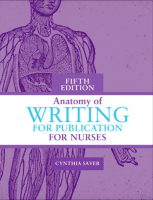A career as a nursing faculty member is an exciting option for clinical nurses eager to share their clinical experiences as they teach and mentor the next generation of nurses. This article describes the roles and responsibilities of nursing faculty and identifies the skills needed to make a smooth transition from the clinical setting to the classroom.
Clinical nursing skills are a solid foundation for those seeking faculty positions. The collegial responsibilities of the clinical nurse include sharing knowledge and experiences with peers, giving constructive feedback, and working with others in a way that promotes mutual respect and meaningful recognition. Similarly, the faculty member performs a needs self-assessment and participates in quality-improvement activities.
Many of the skills and processes needed to excel in clinical nursing resemble those that the nursing faculty member must demonstrate as educator, leader, scholar, advisor, and mentor. The bedside nurse performs assessment, planning, implementation, evaluation, and communication to promote positive patient outcomes and establish a trusting relationship with patients and their families. The nursing faculty member carries out the same processes when relating to nursing students.
Myriad roles of faculty members
Many registered nurses (RNs) who go on to join a nursing faculty have had successful bedside careers and may be certified in a specialty. But at the start of their academic careers, they may have been largely unaware of the faculty member’s multiple roles—educator, leader, change agent, mentor, advisor, researcher, and community servant. So despite their clinical expertise, they were novice educators at first and had to learn to master each role.
New faculty members must learn how to promote learning in classroom, clinical, and laboratory settings. They must assess both their own learning needs and their students’ while planning and implementing teaching strategies to achieve desired learner outcomes. They must learn how to construct exam questions comparable in format and content to those of the National Council Licensure Examination. And they must become adept at interpreting and evaluating exam results and statistics.
Leader and change agent
Nursing faculty members serve as leaders and change agents by participating in curriculum design and evaluation of program outcomes and by advocating for necessary changes both within the nursing school and the community. In the academic setting, they lead by chairing or participating in committees or taskforces and by serving as role models and clinical experts for students.
If you’re seeking to become a faculty member, you can enhance your leadership skills by advancing your current role, rank, or position and increasing your responsibilities and clinical expertise. To do this, consider serving as charge nurse, volunteering to precept new nurses, supporting the use of evidence-based research in practice, joining and becoming an active member of a professional organization, volunteering for committee work, obtaining certification in an area of interest, and accepting opportunities to present scholarly work at research events. These activities will expose you to some of the daily expectations of faculty members, who are expected to advance the profession and support practicing nurses.
Service and research responsibilities
Nursing faculty members are expected to participate in service and research activities. Incorporating evidence-based practice into their teachings is vital to performing this role at a high level—as are attending and, preferably, participating in national and local conferences. These activities also aid the faculty member in pursuit of future research and scholarship. By publishing scholarly work in nursing journals, faculty members acknowledge that scholarship is a vital component of nursing education that helps the nursing profession progress.
Many nursing education programs regard visibility in the community through community service as a key leadership role for faculty. By acting as role models and leaders, faculty members make significant contributions to the institution’s effectiveness toward its mission, philosophy, and strategic plan.
Advisor and mentor
The faculty member’s role as advisor and mentor is crucial to students’ academic performance and to promoting their transition to the nursing profession. Once the faculty member gains adequate mentoring experience, she or he also may be expected to act as a mentor to new faculty members to smooth their transition to the classroom.
Educational requirements
Preferably, RNs should possess a doctoral degree on entering the teaching role. But with the current nursing faculty shortage, a master’s degree may be acceptable, with the expectation that completing a doctoral degree is a career goal.
If you lack a baccalaureate nursing degree, various RN-to-MSN bridge programs are available; some are offered online. But first determine which type of master’s degree is best for you to obtain, based on your particular interests. Although a master’s degree in nursing education might seem like the most obvious choice, nursing schools have a demand for Master’s-prepared faculty in all areas.
If you seek to become an advanced practice registered nurse (APRN), consider combining teaching with other roles. Say, for example, you’d like to keep practicing nursing while you teach—a real option for a faculty member with a license to practice in a clinical setting as an APRN. In the academic setting, this is termed faculty practice. This dual role allows the faculty member to stay current in practice while teaching students in the same area of nursing. Be aware, though, that not all nursing education programs allow APRNs to participate in faculty practice roles.
Faculty job search
When looking for a position on a nursing faculty, carefully evaluate the descriptions of the available positions. Then prepare appropriate questions for recruiters, such as, “What mentorship program or orientation process is available for new nurse faculty?” Ask about the school’s primary strategic goals and mission, and determine if these are congruent with your personal philosophy. If possible, arrange to meet with the dean or faculty members to ask about their responsibilities, work schedules, expectations, and job satisfaction.
Construct a timeline with goals that incorporate the steps outlined above. Of course, you’ll need to update your résumé. Some nursing schools also require a curriculum vitae that highlights educational experience or scholarly activity. Assuming other leadership roles in your current clinical environment, obtaining at least a master’s degree in nursing, and identifying a nursing program that aligns with your career goals will smooth your transition to the nurse faculty role.
Selected references
Bell L, ed. AACN Scope and Standards for Acute and Critical Care Nursing Practice. Aliso Viejo, CA: American Association of Critical-Care Nurses; 2008. www.aacn.org/WD/Practice/Docs/130300-Standards_
for_Acute_and_Critical_Care_Nursing.pdf. Accessed March 23, 2011.
Cangelosi P, Cocker S, Sorrell JM. Expert to novice: clinicians learning new roles as clinical nurse educators. Nurs Educ Perspectives. 2009; 30(6):367-371.
Culleiton AL, Shellenbarger T. Transition of a bedside clinician to a nurse educator. Medsurg Nurs. 2007;16(4):253-257.
Murphy J. Role transition: using partnerships and cognitive apprenticeship to become a nurse educator. In: Moyer BA, Wittmann-Price R, eds. Nursing Education: Foundations for Practice Excellence. Philadelphia, PA: F.A Davis; 2007.
National League for Nursing. Core competencies of nurse educators with task statements. 2005. http://www.nln.org/professional-development-programs/competencies-for-nursing-education. Accessed March 23, 2011.
Suplee PD, Gardner M. Fostering a smooth transition to the faculty role. J Contin Educ Nurs. 2009;40(11):514-520. doi:10.3928/00220124-20091023-09.
Ujváriné AS, Zrínyi M, Tóth H, Zékányné IR, Szögedi I, Betlehem J. The role of faculty and clinical practice in predicting why nurses graduate in Hungary. Nurse Educ Today. 2011:31(1):94-101.
The authors are instructors of nursing at Louisiana State University Health Sciences Center School of Nursing in New Orleans.


















